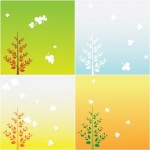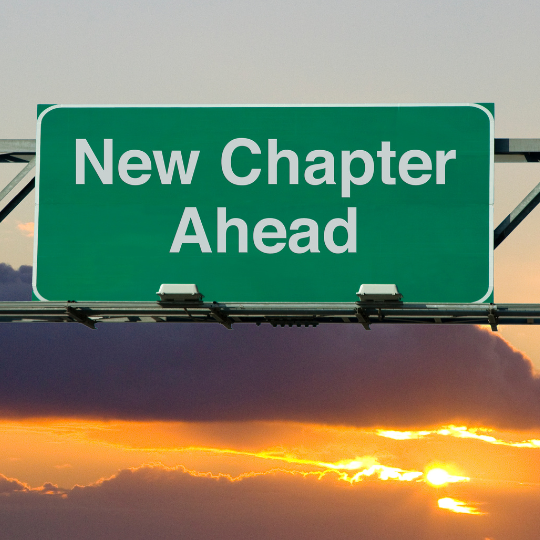Are You Feeling SAD?
 For those of us in the Northern Hemisphere, we’ve recently experienced the shortest day (Winter Solstice) and, as of today, the latest sunrise of the year. It is our wintertime playing out of the seasons. And for some of you reading this, it can be a very difficult time of year, indeed.
For those of us in the Northern Hemisphere, we’ve recently experienced the shortest day (Winter Solstice) and, as of today, the latest sunrise of the year. It is our wintertime playing out of the seasons. And for some of you reading this, it can be a very difficult time of year, indeed.
Seasonal Affective Disorder (SAD) is a recurring reality for a great number of people in modern times. Typically, the farther away from the equator you live, the greater the likelihood that you will experience SAD during the winter months. That’s good news if you live in Southern California. It’s maybe not such great news if you reside in Alaska or the Northwest Territories.
If you have been diagnosed with SAD or think you may struggle with the condition, I strongly urge you to read up on its management. Much of the artificial treatment can be augmented with or even replaced by natural approaches. (If you’re receiving treatment for SAD or depression-related symptoms, always work with your qualified medical practitioner when considering alternative approaches.)
One of the primary problems associated with SAD is getting insufficient exposure to sunlight. Up near the Arctic Circle, this is nearly an unavoidable situation. For those of us who are living in more temperate climes, however, the issue is more lifestyle-related than geo-positional. That means that we have it within our power to take control and deal with it.
Getting adequate sunshine is typically associated with Vitamin D production, but in winter that isn’t really the problem domain. When we’re dealing with snow, few of us will be wandering around with enough skin exposed for Vitamin D to be produced regardless of latitude. When one is living above approx. 35 degrees latitude, natural Vitamin D production isn’t possible at all during the darkest winter months. For Vitamin D, one must resort to supplementation in lieu of adequate sunshine.
Getting that winter sunshine is important, however; sunshine is essential in stimulating serotonin production, which in turn is essential in signalling the pineal gland to produce melatonin at night. The amount of melatonin produced at night has a demonstrable relationship to the amount and intensity of natural light frequencies received during the daylight hours. Too little exposure to light during the appropriate hours results in insufficient melatonin production during sleep.
For those of us below the arctic circle, this sunshine situation is relatively easy to manage: Simply put, get outside and expose those eyes to sunshine during peak hours. Those avoid the sun between 10 and 2 hours are precisely the times during which you stimulate the body to produce sufficient serotonin. Get outside and be active!
Humans have naturally developed tendencies towards physical economy during times of shortage. Our modern era, however, has such a glut of food all year round that it’s important for us to work through a tendency to idle behaviour in winter and push forth with physical exercise outdoors.
Scheduling regular outdoor activities during zenith sunshine hours can be challenging for office workers. For people who have challenging schedules or physical limitations, light stimulation is possible via full-spectrum lighting. Light therapy is a demonstrably successful approach to managing SAD. There are a number of vendors of products suitable for exposure to wavelengths that will help you optimize your exposure to optical wavelengths.
Vitamin D can be supplemented via vitamins (always take D3 and avoid D2 supplements, the latter being bio-unavailable to humans). In keeping with light therapy, however, another approach can be light therapy that includes infrared and ultraviolet wavelengths. There are lamp arrays that feature electronic ballasts and are safe for tanning and the natural production of Vitamin D. If you’re using such a lamp array, it’s important to schedule these light sessions and vitamin supplementation to coincide with the sun’s zenith hours. Timing your light exposure to match the sun’s highest point in the sky keeps your exposure in lockstep with the diurnal rhythm. That, in turn, keeps your melatonin production happening on schedule.
Another SAD management practice that you may find helpful is to add meditation or other stress-management techniques (TAT, EFT, etc.) to your toolkit. Yoga and QiGong are wonderful additions here, as they not only promote physical activity, but include the cultivation of personal energy stores. There are many types of both yoga and QiGong, so explore to find what styles work best for you.
Finally, intelligent dietary choices are key here. It’s essential to ensure that your diet includes a good ratio of Omega-3 fatty acids compared to Omega-6 (the latter which features far too high in most peoples’ diets). Cutting out processed foods will help to reduce your intake of sodium chloride and sugars. Further lowering your non-vegetable carbohydrate intake also helps tremendously.
When you take a holistic approach to your health, the results can be surprising. If you have other approaches to dealing with SAD or other depressive disorders, please feel free to share in the comments below.



Leave a Reply